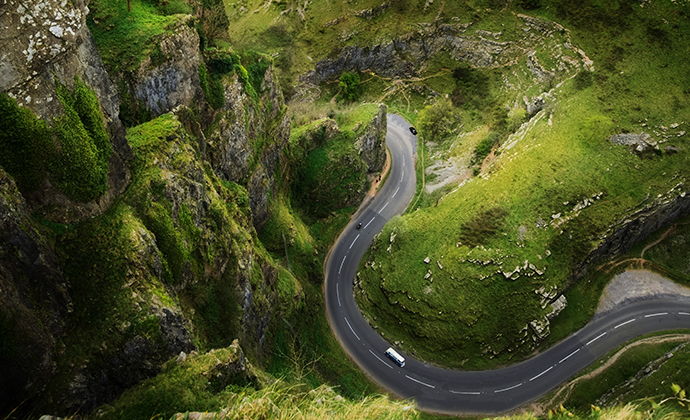A true river gorge, Cheddar was formed millions of years ago by glacial meltwater, the resultant river creating the massive fissure you see today.
Cheddar Gorge is often rated one of Britain’s finest natural phenomena, a claim that’s not without substance. If nothing else, it’s certainly England’s largest canyon – an impressive fact for starters. A true river gorge, Cheddar was formed millions of years ago by glacial meltwater, the resultant river creating the massive fissure you see today.
The most exciting approach to the gorge is along the B3135 from the east. Until 1800, there was no carriage road through here; instead access would have been by horse or pack mule, or on foot – these days a narrow, tightly twisting road shadowed by towering cliff sides wends its way through the two-mile chasm.

Whatever your mode of transport, this demands concentration, not least because there are so many distractions; in addition to the gorge’s awesome natural beauty, feral Soay sheep – with their distinctive, shaggy chocolate coats – and wild goats cling improbably to the sides, while buzzards, falcons and kestrels circle high above. Unsurprisingly, it’s a landscape beloved of climbers, the gorge presenting some of the country’s most challenging terrain. These days, the gorge is owned by the National Trust, though the caves and other attractions, as well as the parking facilities, are not.
Cheddar and tourism have long gone hand in hand. The village had in fact established itself as a popular tourist attraction long before the opening of the caves, thanks in large part to the opening of the Great Western Railway branch line through Cheddar in 1869. The railway line has long gone, and these days it’s the caves and its attendant attractions that sustain the local economy.
The crowds (in summer at least) can be off-putting, as can the litany of souvenir shops and cafés lining the main road. Car parking, too, is a pain, though there are designated pay-and-displays dotted about, which cost around £5 a day. The village of Cheddar itself is nothing to get too worked up about, though there are one or two agreeable pubs should you wish to stick around.